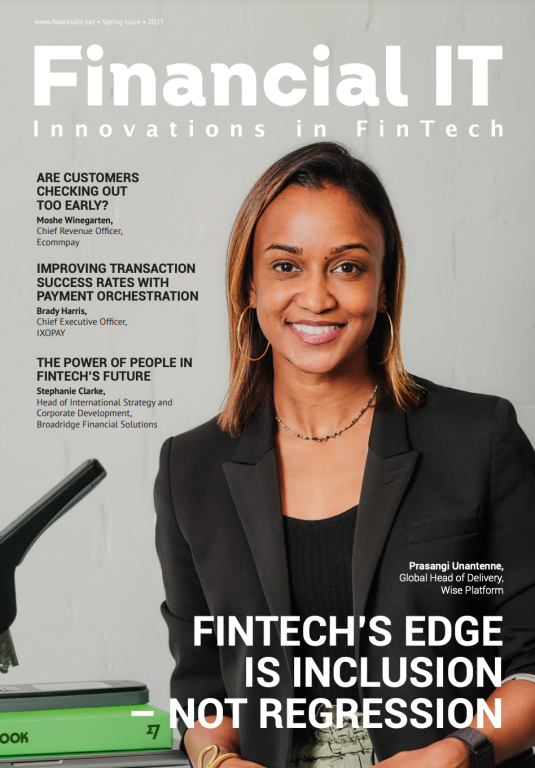The Tech Driving Digital Remittances

- Will Rolph, Business Development Manager at Clear Junction
- 01.10.2024 11:15 am #DigitalRemittances #FintechTechnology
If you want to see fintech as a force for good that can create positive changes for individuals and businesses, remittances are a prime example. Their role in facilitating financial inclusion cannot be underestimated, by increasing people’s purchasing power, raising per capita incomes, and feeding into local and national economic growth.
It’s predicted that by 2027 remittances could reach $1.2 trillion, with the potential to unleash profound transformations in their recipient societies. While many factors are driving this growth, like increasing waves of migration, none are as influential as the proliferation of innovative technology making remittances easier to send and receive – and at much lower cost than traditional money transfer channels beset by high FX fees and sluggish settlement times.
For decades, remittances were dominated by a few players including Western Union and MoneyGram. While they have enviable global reach and networks, recipients – especially those in rural and remote locations – were faced with a lack of physical offices on the ground where they could collect their remittances. It was common for recipients to have to travel long distances to get their money. The loss of time and convenience is obvious, but these often arduous journeys also came with an increased risk of theft or loss of funds along the way.
The lack of physical infrastructure soon became a problem that tech was perfectly placed to solve, and it did so in a way that allowed mobile payments to leapfrog legacy infrastructure issues with ease. While Europe boasts advanced and widespread telecom and payment infrastructure (with an overall 92% mobile penetration rate), historically most growth has been concentrated in Western Europe, while Eastern Europe is still catching up after decades of under-investment. Smartphone penetration rates range from 81% in Croatia to 68% in Bulgaria. But Eastern Europe is growing fast - between 2011 and 2021, the mobile phone penetration rate increased by 28% in Georgia and by 73% in Moldova, and mobile data traffic across the Eastern European region is expected to increase five-fold by 2026, showing greater growth than both Western Europe and North America, according to the GSMA.
We can look to Poland, and specifically the BLIK mobile payment system that allows e-commerce, POS, ATM, and P2P transactions, as a showcase of how mobile payments technology has solved fundamental and systemic payments issues.
Since its launch in 2015, BLIK has expanded to become an integral everyday way to pay and move money. In 2023, BLIK phone P2P transfers were the second most popular BLIK service after e-commerce transactions. Users made more than 415 million P2P transactions, 71% more than in 2022. P2P payments now make up almost one-fourth of all BLIK operations, with total value reaching PLN 57.4 billion (93% more than in 2022), contributing around 1.6% to Poland’s GDP. While BLIK P2P transfers only support PLN-denominated transfers right now, the scheme has plans to operate on a pan-European basis to support transfers in other currencies.
What’s powering digital remittances?
The tech behind digital remittances is a complex ecosystem that has evolved significantly over time, and the pace of innovation shows no sign of slowing down. There are several key technologies and methods involved in advanced remittance solutions.
Electronic Funds Transfer (EFT) is a method of transferring money from one bank account to another electronically. Remittance services often utilise EFT to move funds between the sender’s bank account and the recipient’s bank account or designated payout location.
Payment gateways are another crucial component. These online platforms facilitate the transfer of funds between parties, securely processing transactions, verifying payment information, and transferring funds between the sender and the recipient.
Remittance providers often integrate with banks, payment gateways, and other financial institutions via APIs (application programming interfaces) to access banking infrastructure and facilitate fund transfers. The APIs enable real-time transaction processing, status updates, and seamless connectivity between the remittance platform and other financial services.
Finally, because security is paramount when it comes to remittance transactions, remittance platforms employ encryption tech to secure data transmission and storage, which protects sensitive financial information and prevents fraud. Secure Socket Layer (SSL) encryption, Transport Layer Security (TLS), and multi-factor authentication are commonly used to safeguard transactions and user data.
These technological advances have all played their part in helping remittances to proliferate and touch the lives of people who were out of reach before – and who can now access a wide array of sophisticated financial services all from their phone.
Tech trends taking remittances to the next level
Super apps
The main innovation that has sent remittances skyrocketing is the phenomenal adoption of smartphones, which has paved the way for the rise of money transfer super apps.
The importance of the smartphone in the global remittance market cannot be understated. By necessity, apps need to be user-friendly and easy to navigate to succeed. Apps play a crucial role in improving the remittance process by offering the speed, cost efficiency, and security that users have come to expect. Furthermore, remittance apps often provide features that allow users to track their transfers in real-time and manage their transaction history easily. This helps in budgeting and financial planning, especially for those who send remittances regularly.
Most importantly, 4G or 5G networks mean such apps can reach users in remote or underserved areas where access to broadband internet infrastructure or traditional banking services is limited or non-existent. This accessibility is in turn driving inclusivity and promoting financial participation and empowerment among a broader segment of the population.
Eastern Europe serves as a good example of where this technology is particularly life changing. Across the continent, banking penetration rates range between 44% in Albania to 92% in Croatia, so a key challenge and focus for banks, governments, and tech solution providers is driving greater financial inclusion, and improving remittance flows are key to this.
Blockchain
Just as cryptocurrencies use blockchain technology to track assets, some remittance providers are now leveraging the same technology to streamline the transfer process and enhance security.
Blockchain technology enables secure, transparent, and immutable record-keeping of transactions, reducing the risk of fraud and enhancing trust between parties. Cryptocurrencies like Bitcoin and stablecoins are sometimes used for remittance purposes, leveraging blockchain technology for fast and low-cost cross-border transfers.
It’s easy to see the attraction of blockchain technology for remittance providers. It is a fully encrypted, decentralised, and immutable ledger, and as such cannot be altered in any way. Plus, because blockchain technology is decentralised, no intermediary bank or financial institution can get involved. For these reasons, blockchain could become crucial to the remittance industry in the coming years.
Artificial Intelligence (AI) and Machine Learning (ML):
There are few industries not being impacted by AI and ML technologies, and both are increasingly being employed in remittance services to detect fraudulent activities, improve compliance with regulatory requirements, and enhance user experience. These technologies analyse transaction patterns, identify anomalies, and provide insights to prevent fraudulent transactions and ensure regulatory compliance.
Why it matters
Remittances play a vital role in both individual livelihoods and broader economic development efforts, making them an essential aspect of global economic relations and poverty alleviation strategies. At Clear Junction we do a lot of work in Eastern Europe to help our remittance partners there provide safe and secure inflows. Employing secure and proven technology is of utmost importance, as is the knowledge that when funds are sent, they will appear in the recipient’s account in as little as a few minutes.
On a broader level, we can see the tangible, life-changing differences that payment technology evolution can achieve, directly through increased household purchasing power and accessing formal and cheaper financial services; and indirectly through increased revenues for remittance service providers and the businesses people buy from.
This ultimately means more tax revenues to fund infrastructure development projects, business creation and employment opportunities, cheaper settlement rates, and of course, greater financial inclusion.
While remittances used to require paperwork, patience, and time-consuming visits to a physical branch, new and emerging technologies give consumers financial power wherever and whenever they need it.





















